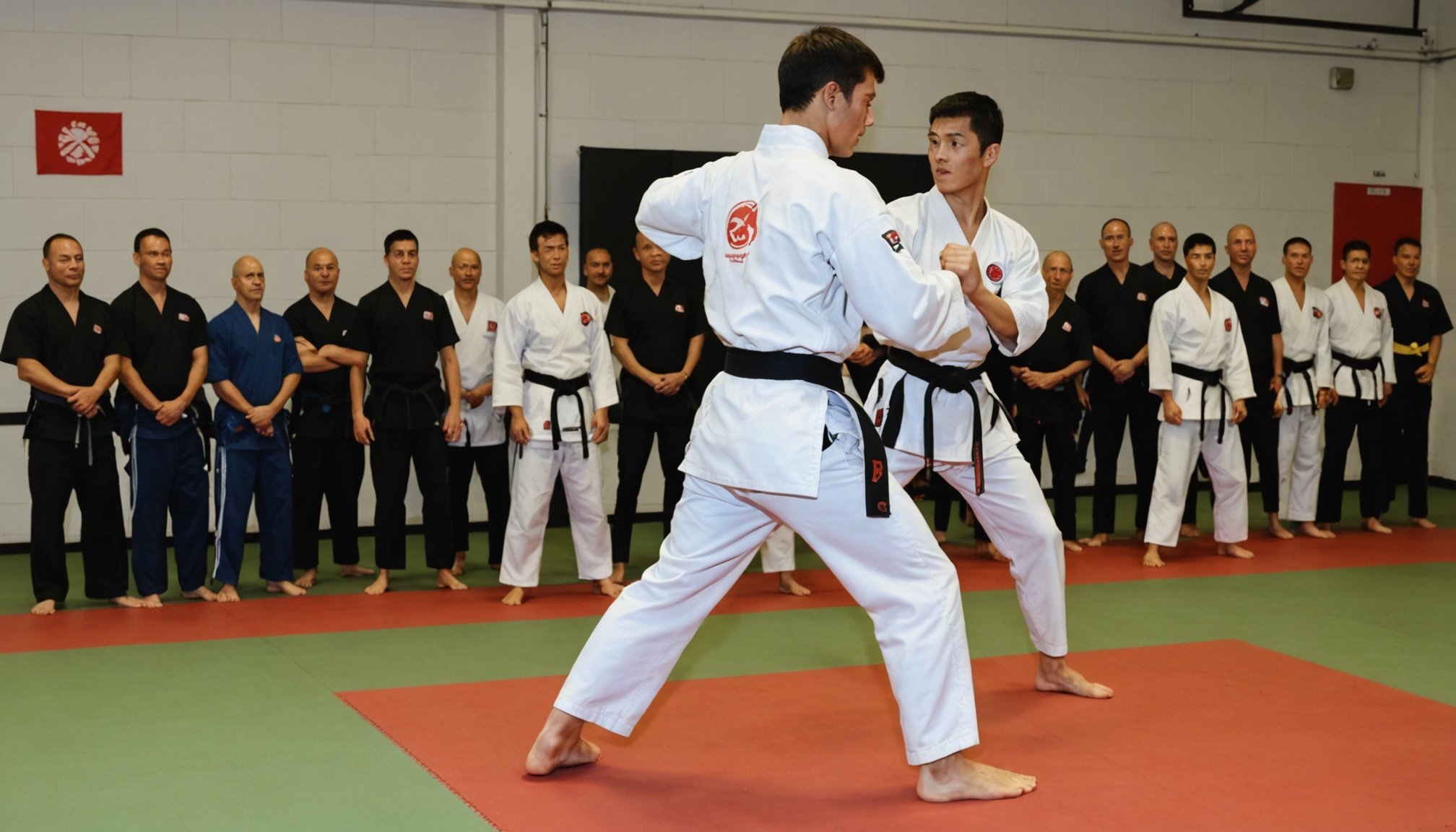Top Drills for UK Karateka to Boost Kumite Skills: Elevate Your Performance!
For karate practitioners in the UK, mastering kumite is crucial for both competitive success and self-defense proficiency. Here’s a comprehensive guide to the top drills that can help you elevate your kumite skills, whether you’re a beginner or an advanced karateka.
Understanding Kumite and Its Importance
Kumite, or sparring, is a fundamental aspect of karate training. It involves practicing techniques against a live opponent, which helps in developing timing, reflexes, and the ability to apply karate techniques in dynamic situations. As noted by a seasoned karate practitioner on Reddit, “kumite has historically focused on controlled techniques and not in incapacitating an opponent by KO,” highlighting its importance in both sport and self-defense contexts[3].
Also to see : Crafting the Ultimate Travel Itinerary for UK Fighters Competing Internationally
Essential Drills for Kumite Training
To improve your kumite skills, you need to engage in a variety of drills that target different aspects of sparring. Here are some essential drills to include in your training:
Partner Drills
Partner drills are foundational for kumite training. Here are a few key drills:
Have you seen this : Creative Approaches to Instilling Discipline and Respect in UK Martial Arts Classes
- Sanbon Kumite: This involves a series of three-step sparring drills where one partner attacks and the other defends. It helps in developing basic defensive and counterattacking skills.
- Ohyo Kumite: This is a more fluid version of sanbon kumite, where the defender can move freely and respond to various types of attacks.
- Kihon Kumite: This drill focuses on basic techniques such as stances, punches, and kicks, practiced in a controlled sparring environment.
Competition-Style Sparring
- Point Sparring: This is the most common form of sparring in competitive karate. It involves scoring points for successful techniques while adhering to competition rules.
- Knockdown Sparring: Though less common in traditional karate clubs, knockdown sparring is practiced in some full-contact karate styles like Kyokushin. It emphasizes the ability to knock down an opponent.
Controlled but Realistic Sparring
- Scenario Sparring: This involves practicing sparring in scenarios that mimic real-life self-defense situations. It helps in developing the ability to respond to unexpected attacks.
- Randori: A free-style sparring drill where participants can use a wide range of techniques without the constraints of competition rules.
Detailed Drill Examples
Here are some detailed examples of drills you can incorporate into your training:
Sanbon Kumite Drill
- Step 1: The attacker steps forward with a front kick.
- Step 2: The defender moves back and blocks the kick with a downward block.
- Step 3: The defender counterattacks with a punch or kick.
- Repeat: Switch roles and repeat the sequence.
Ohyo Kumite Drill
- Setup: The attacker and defender start in a fighting stance.
- Execution: The attacker initiates an attack (e.g., a punch or kick), and the defender responds with a block and counterattack.
- Variation: The defender can move freely to evade the attack and counter from different angles.
Table: Comparison of Kumite Drills
| Drill Type | Description | Benefits |
|---|---|---|
| Sanbon Kumite | Structured three-step sparring drill | Develops basic defensive and counterattacking skills |
| Ohyo Kumite | Fluid, dynamic sparring drill | Improves reaction time and adaptability |
| Kihon Kumite | Focuses on basic techniques in a controlled sparring environment | Enhances fundamental skills and technique execution |
| Point Sparring | Competitive sparring with emphasis on scoring points | Prepares for tournament settings and improves precision |
| Knockdown Sparring | Full-contact sparring with the goal of knocking down the opponent | Develops physical toughness and the ability to handle full-contact |
| Scenario Sparring | Simulates real-life self-defense scenarios | Enhances practical self-defense skills |
| Randori | Free-style sparring with minimal rules | Improves adaptability and spontaneous response skills |
Quotes from Experienced Practitioners
- “Kumite practice in karate has historically focused on controlled techniques and not in incapacitating an opponent by KO,” – Reddit user, highlighting the controlled nature of kumite[3].
- “I was a competitor for most of my childhood and teens and I’ve seen how kumite has developed over the years… it has gotten tougher and harder to be at the top,” – Experienced karate competitor, emphasizing the evolution and challenge of competitive kumite[3].
Practical Insights and Actionable Advice
Join a Reputable Karate Club
Joining a karate club with experienced instructors is crucial. As one practitioner noted, “what makes my dojo exceptional is the instructors’ dedication to the history and traditions of karate and Wado,” which ensures a well-rounded education in karate[3].
Focus on Fundamentals
Do not neglect the basics. Techniques like gyaku zuki no tsukkomi, though challenging, are essential for a comprehensive karate education. Ensure your training includes a balanced mix of kata, kihon, and kumite.
Train Regularly
Consistency is key. Aim to train at least three times a week, with one day dedicated to kumite drills. Here’s an example weekly schedule:
- Monday: Kata and kihon training
- Wednesday: Kumite drills and sparring
- Friday: Scenario sparring and randori
Participate in Championships
Participating in local and international championships can significantly enhance your skills. For instance, the JKS England squad often participates in open championships, which provides valuable experience and exposure to different sparring styles.
Belt Training and Progression
Belt promotions vary significantly between clubs, but a reputable club will prioritize the depth of knowledge and skill over mere progression. Here’s a general outline of what to expect at different belt levels:
Brown Belt
- Focus: Advanced techniques, complex kumite drills, and scenario sparring.
- Training: Intensive sparring sessions, including point sparring and randori.
Black Belt
- Focus: Mastery of all techniques, advanced kumite strategies, and leadership skills.
- Training: High-intensity sparring, teaching junior students, and participating in advanced training courses.
Mastering kumite is a journey that requires dedication, consistent training, and a deep understanding of karate principles. By incorporating the drills and practices outlined above into your training regimen, you can significantly elevate your kumite skills. Remember, as one experienced practitioner put it, “character, sincerity, effort, etiquette, and self-control are all present and valued” in true karate practice[3].
Whether you are training for competitive success or personal development, the key is to stay committed, seek guidance from experienced senseis, and always strive to improve. With the right approach and training, you can achieve great success in your karate journey. So, join your local karate club, engage in these top drills, and get ready to elevate your performance in kumite.











